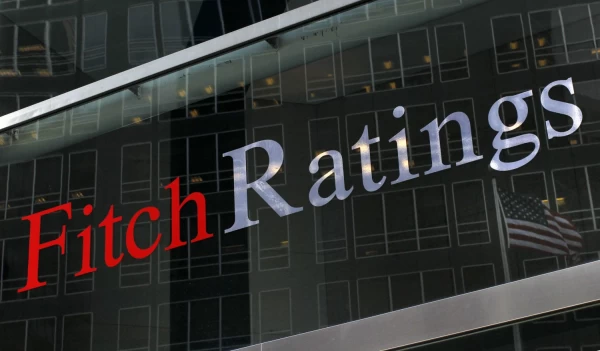
Fitch cited several factors that affected the downward rating.
Deteriorating Public Finances
The downgrade reflects a deterioration in public finances. General government debt is forecast to rise to 21.1% of GDP at end-2023 and remain on an upward path in the medium term, despite fiscal consolidation measures introduced in June. While debt/GDP will remain low compared with the peer median of 54.0%, it is more than double the level when Fitch upgraded Estonia to 'AA-' in 2018 (8.2%), when the agency anticipated debt/GDP to be stable. This reflects a loosening of the historically tight fiscal stance, aggravated by the war in Ukraine and the pandemic.
Looser Fiscal Stance
The 2023 budget targeted a deficit of 4.2% of GDP, up from a deficit of 0.9% in 2022, owing to an increase in social transfers, higher public sector wages, a rise in the tax-free income threshold and multi-year commitments on military and education spending. Discomfort over the debt trajectory at a time of rising financing costs saw the new government, formed in April, introduce a package of consolidation measures. These chiefly take effect from the start of 2024, with the largest being a hike in VAT.
In addition, corporate income tax, gambling taxes and excise duties will be raised and an increase in child allowances will be partially reversed. Additional measures are pending, although their full impact may not emerge until 2025.
Deficits Despite New Measures
Fitch forecasts a deficit of 3.6% of GDP this year, reflecting the strong performance over the first five months and expenditure restraint by the new government. The deficit should then narrow to 2.6% in 2024 and 2% in 2025 due to the new revenue-raising measures. Fitch has been cautious in applying the government projections on the impact of its June tax package on the understanding that these do not incorporate the potential impact on growth and other key variables.
Advertisement / Reklaam
Advertisement / Reklaam
Debt on Upward TrajectoryFiscal deficits will put general government debt/GDP on an upward trend. Fitch forecasts debt/GDP to rise to 23.1% by end-2025 from 18.4% at end-2022 and the agency's debt dynamics show a continued gradual increase to 25.1% by end-2027. Government debt/GDP was below 10% until 2020, with the general government balance averaging a surplus of 0.1% over the preceding decade. The lack of measures to close the gap caused by the pillar two pension withdrawals (which have been allowed since January 2021) raises questions about the long-term sustainability of the pension system.
Growth Challenges
Real GDP growth has remained weak. A 0.6% qoq decline in real GDP growth (down 3.2% yoy) in 1Q and weak high frequency indicators for 2Q point to a second consecutive year of contraction (the -1.3% growth in 2022 was the worst in the EU). The economy is being hit by the sanctions on Russia and Belarus, which have disrupted supply chains for some industries, and the weakness of the Nordic real estate sector, a major market for Estonia manufacturing. Growth should pick up later this year as real wages return to positive territory, although a likely rebuilding of household savings will temper the growth in consumption. All in all, we expect the Estonian economy to contract by 1.6% this year.
A further rebound in real incomes, reviving credit growth, a recovery in key trading partners should lift real GDP growth to 3.5% in 2024, despite the impact of tax hikes.
Uncertainty About Competitiveness
In Fitch's opinion, it is too early to determine whether there has been structural damage to Estonia's competitiveness. In part, this reflects the interconnected nature of the two shocks the economy is facing. Unit labour costs and the real effective exchange rate have appreciated strongly against EU averages for a sustained period and the current account has been in deficit in the past few years due to a deterioration in the trade balance.
Inflation High but Falling
Inflation has fallen and was 9.2% in June, from a peak of 25.2% in August 2022, largely due to falling energy prices. Food prices are now the main source of inflation and should decline in line with lower commodity prices, although the pass-through has been slower than usual. Fitch forecasts inflation to fall to around 5% at end year and average 9.7%, above the 'A' median of 6.2%. The planned tax hikes could add around 2pp to inflation in 2024, when we forecast it to average 4.3%. Average inflation is expected to ease further, to 3.1% in 2025. The shock to inflation does not appear to have unanchored long-term inflation expectations.
Advertisement / Reklaam
Advertisement / Reklaam
Strong Banking SectorThe largely foreign-owned banking sector is in a strong position, and is well capitalised (Tier 1 capital ratio of 27.1% at end-1Q), liquid and currently highly profitable due to growth in net interest margins. Non-performing loans have stayed on a downward trend and were 0.8% at end-April 2023. Banks have not reported any impact from higher interest rates on the servicing of their mortgage portfolios, even though virtually all mortgages are floating rate, as they are stressed well above current interest rates at origination.
ESG - Governance
Estonia has an ESG Relevance Score (RS) of '5[+]' for both Political Stability and Rights and for the Rule of Law, Institutional and Regulatory Quality and Control of Corruption. Theses scores reflect the high weight that the World Bank Governance Indicators (WBGI) have in our proprietary Sovereign Rating Model. Estonia has a high WBGI ranking at 87th percentile, reflecting its long track record of stable and peaceful political transitions, well established rights for participation in the political process, strong institutional capacity, effective rule of law and a low level of corruption.
https://www.fitchratings.com/r...

